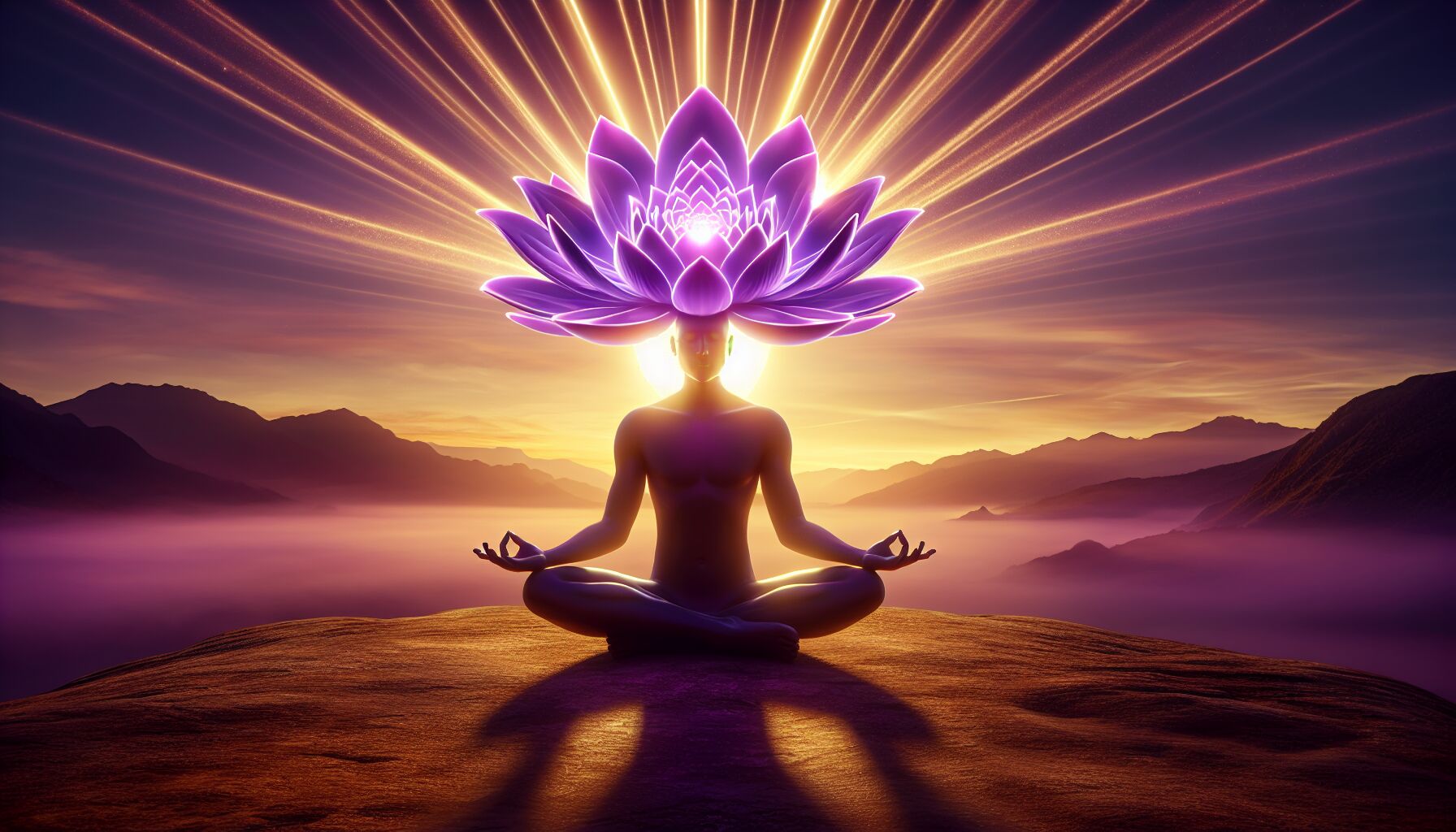 Most traditions that speak of the chakras aren’t talking about metaphysical fireworks or abstract concepts. They’re pointing to a practical map of how human energy moves — and how it gets blocked. What we call “chakras” are really just ancient ways of tracking the flow and function of internal energy centers. These centers aren’t located in the physical body like organs, but they correspond closely with key nerve bundles and hormonal systems. They speak to something deeper — the intersection between the mind, the spirit, and the body’s natural self-healing mechanisms.
Most traditions that speak of the chakras aren’t talking about metaphysical fireworks or abstract concepts. They’re pointing to a practical map of how human energy moves — and how it gets blocked. What we call “chakras” are really just ancient ways of tracking the flow and function of internal energy centers. These centers aren’t located in the physical body like organs, but they correspond closely with key nerve bundles and hormonal systems. They speak to something deeper — the intersection between the mind, the spirit, and the body’s natural self-healing mechanisms.
Think of the chakra system less like a ladder to climb, and more like a garden to tend. Each chakra — from the root at the base of the spine to the crown at the top of the head — corresponds to different aspects of everyday existence. Survival. Creativity. Willpower. Love. Expression. Insight. Connection. It’s not mystical when you break it down — it’s deeply human. You don’t need to be a yogi or a mystic to feel when your throat tightens from not speaking up, or your stomach knots up from anxiety. These are signals. And when you learn to read them, you start tuning into the energy centers that govern not just how you feel, but how you live.
Let me explain it like this — if one of your tires is low on air, the whole car pulls awkwardly. You don’t need to overhaul the engine. You just need air. Same goes with your energy system. If one chakra is struggling, the imbalance throws off the rest. And this isn’t about chasing perfection — nobody’s always centered. It’s about noticing the noise, sitting with it, and trusting the body’s natural intelligence to sort itself… with a little nudge.
Here’s a barebones breakdown of the seven major energy centers:
- Root (Muladhara): Safety, basic needs, grounding. Too much stress? You’ll feel it here first — in your legs, lower back, or sense of restlessness.
- Sacral (Svadhisthana): Sensuality, fluidity, relationships. A stuck sacral center can feel like burnout, jealousy, or emotional numbness. Movement helps.
- Solar Plexus (Manipura): Confidence, will, personal power. When this energy center dims, so does your inner fire. Indecision, digestive issues, or self-doubt usually show up.
- Heart (Anahata): Compassion, connection, grief, love. Ever felt chest pressure from sorrow? That’s Anahata trying to clear out some stuff.
- Throat (Vishuddha): Expression, truth, boundaries. Swallowed your voice lately? You may feel tension here — or even sore throats for “no reason.”
- Third Eye (Ajna): Intuition, clarity, perspective. This isn’t about fortune-telling — it’s about insight. Can you see what’s really happening in your life, or just react?
- Crown (Sahasrara): Awareness, consciousness, interconnection. This one’s quiet. You don’t force crown energy — you listen for it.
Ancient Eastern medicine systems like Ayurveda and Traditional Chinese Medicine have long understood illness and fatigue not just in terms of physical pathology, but as energy that’s misdirected, suppressed, or stagnating. Western science, slowly but surely, is starting to catch up. Researchers are investigating how meditation, breathwork, and body awareness directly influence the nervous system, hormone production, and even gene expression. The NCBI published findings showing that mind-body practices can regulate stress hormones, improve inflammation markers, and boost parasympathetic (rest-and-digest) function… which sounds a lot like ancient chakra science reworded to fit modern neuroscience.
And you know what? That’s a good thing. None of this is about dogma. It’s about function. It’s about being present in your own body long enough to recognize what’s off. As Carl Jung once reflected,
“When an inner situation is not made conscious, it appears outside as fate.”
In chakra work, the “inner situation” is always asking for attention. Not avoidance. Not obsession. Just presence.
Everything in nature works in rhythms — tides, moons, seasons, breath. Your body’s energy does the same. Working with the chakra system is less about fixing and more about remembering that. When you sit with that subtle pull toward balance, the body starts to speak clearly. Not in words, but in stillness, sensations, and quiet nudges that start making sense over time.
So the real question isn’t whether you believe in chakras. That’s beside the point. The question is — are you listening when something inside says, “Something’s off”? That whisper, that sensation, that restlessness
Step-by-step chakra meditation routine
Here’s how you actually do it — no fancy chants, no incense clouds, no chasing cosmic visions. Just time, breath, and attention. You’ll want a quiet spot. Doesn’t have to be spotless or decked out in Himalayan tapestries. A corner on your porch, a patch of grass, a seat on your living room floor — anywhere you can hear your own breath without competing with the constant hum of the world. Sit comfortably. Spine straight like a tall sapling, relaxed but alert. Palms up or resting on your knees, whatever helps the shoulders drop away from the ears. Close your eyes if that feels natural.
Now—a step-by-step rhythm to reconnect with your energy centers. You’re not chasing enlightenment; you’re listening for feedback. It’s like checking the wires in a home circuit box. You’re just noticing what’s humming along and what’s flickering.
- Start at the base — the root (Muladhara). Bring your attention to the area at the base of your spine. Imagine your breath sinking deep into the floor beneath you. Visualize a red glow there — earthy, dense, strong. If your thoughts get distracted by bills, deadlines, or to-do lists, gently bring them back to this point. Muladhara speaks of security and foundation. Ask yourself: Am I being pulled in too many directions? Am I grounded in my decisions? Stay here for a few breaths longer than you think you need.
- Move into the sacral (Svadhisthana), just below your navel. This is flow. Emotional, sensual, relational. Let your breath settle here. Imagine warm orange light swirling gently — like water over stones. Envision soft movement, even if you’re still. This energy center doesn’t need logic — it needs permission. Have you made space to feel lately, without judgment?
- Rise up to the solar plexus (Manipura), mid-abdomen. This is your gut instinct, your will, your fire. Breathe deeply into this space and feel the heat build — imagine the sun rising within. Yellow, bright, focused. This isn’t about force; it’s about clarity. What have you been hesitating on? Or pushing too hard? Let your breath expose where your confidence has been shoved aside or inflated beyond what’s helpful.
- Let it soften into the heart (Anahata). Think green — not bright neon, but forest green. Calming, expansive. Let your chest open slightly more with each inhale. This isn’t just about love; it’s about grief, too. Many folks try to skip this part, thinking love should always feel soft. Sometimes love feels like loss. Let both be true. And let your exhale carry out whatever the heart’s been holding too tightly.
- Shift to the throat (Vishuddha). The neck, jaw, vocal cords — they hold stories you didn’t tell and truths you swallowed. Picture a blue, steady beam. Precision without aggression. Breathe into that place that tightens when you silence yourself to keep the peace. Ask yourself quietly: Where have I been silent that matters most? Sometimes, speaking truth isn’t about raising your voice — it’s about not betraying your gut.
- Now your brow — the third eye (Ajna). Between the eyebrows, where focus meets perception. Think indigo, still and deep like twilight. Don’t push for visions or symbols. Simply breathe and watch what floats into awareness — not thoughts, but knowing. Has your intuition been blurred by noise, screens, or fear? Let it clear itself.
- Last — the crown (Sahasrara). At the top of your head. Gentle violet or white light, feather-like, not fixed. This one’s less about focus and more about letting go. Imagine your breath lifting through the crown and widening into space. You’re not reaching out — you’re receiving. Not command and control — just connection. Let awareness expand. You might feel nothing, or a quiet buzz. Just let it be.
Take a few moments here — no rush. Feel the whole chain of sensation from root to crown. You’ve just walked the body’s vertical axis, tuned in and checked the lines for distortion. And in that stillness, you’ve encouraged self-healing. Because the body — like the land, like the seasons — wants balance. It just needs space to return to it.
Now, a quick reality check: thoughts will come up. It won’t feel perfect. That’s fine. The goal here isn’t blissing out. It’s observation and participation. Feel tightness? Numbness? Distraction? You’re not failing; you’re noticing. That alone is healing.
If it helps, use tools that root you. A hand drum or singing bowl, if you have one. Or even just counting the breath — four in, four out. There’s no need for theatrics. Even consistent practice for ten minutes a few times per week can create noticeable changes in clarity, nervous system regulation, and general mood. Clinical studies have shown measurable
Tips for maintaining energy balance
 Here’s where it gets practical — because keeping your energy centers tuned isn’t just about meditating now and then. It’s a rhythm, not a single moment. The same way a garden needs water after the rain stops, your system needs care even when things feel okay. You can’t just check in once, feel good, then ghost yourself until burnout knocks again. The work is steady — and oddly enough, kind.
Here’s where it gets practical — because keeping your energy centers tuned isn’t just about meditating now and then. It’s a rhythm, not a single moment. The same way a garden needs water after the rain stops, your system needs care even when things feel okay. You can’t just check in once, feel good, then ghost yourself until burnout knocks again. The work is steady — and oddly enough, kind.
Let’s be honest: modern life doesn’t exactly nurture balance. Constant stimulation, digital clutter, deadlines on top of distractions… no wonder people feel like they’re always trying to catch up with their own nervous systems. So if you’re going to keep your energy pathways flowing, the first rule is this — don’t outsource your center. That means creating repeated, real-world habits that nourish those seven centers without turning it into yet another “task.”
Start with food, because frankly, it’s one of the easiest daily tools for self-healing. Each energy center responds to different elements, flavors, and textures. Think of:
- Root Chakra: earthy root vegetables like beets, carrots, potatoes. The body recognizes grounding nourishment.
- Sacral Chakra: hydrating fruits like melons and oranges — foods that bring moisture and flow.
- Solar Plexus: warming spices — turmeric, ginger, black pepper — to stoke inner fire.
- Heart Chakra: leafy greens, bitter herbs, and cacao for its heart-opening properties.
- Throat Chakra: cooling herbs (peppermint, licorice), lots of clean water, and even singing to stimulate vibrational tone.
- Third Eye: omega-rich foods, like walnuts and flaxseed, support brain clarity and hormonal conversion.
- Crown Chakra: fast occasionally or eat simply, allowing clarity through lightness.
Of course, none of this has to be a spreadsheet. It’s not about perfection but pattern. Eat with presence. Chew slowly. Cook more. That alone rewires your energy field.
Next — your breath. Odds are, you don’t breathe as fully as your body would like. Most of us don’t. Not because we’re damaged, but because we’ve inherited a culture that teaches us speed instead of space. Just a few minutes of conscious breathing per day, in or out of meditation, can settle scattered thought, regulate vagus nerve tone, and gently rewire how your body processes stress. If you’re curious, look at the work of Dr. Stephen Porges on Polyvagal Theory — it’s one of the bridges between ancient energy practices and modern neurobiology.
Now here’s something we often forget: maintenance isn’t only about input. Output matters too. What you don’t express builds static in the system. Whether it’s stuck frustration in the gut (that’s your solar plexus holding the line) or unsaid thoughts in the throat (hello, Vishuddha), that buildup needs to move or it’ll spill. Movement practices matter — not just exercise, but expressive motion.
Try these:
- Walking barefoot on grass or soil — simple, ancient grounding
- Dancing alone without choreography — let the body speak
- Humming, chanting, or singing aloud — entrains breath and vibration
- Stretching intuitively — not structured yoga, just what your body asks for
And if you can, pay attention to what season you’re in. Literally and personally. Spring tends to stir the sacral and heart centers — birth, movement, possibility. Summer charges the solar plexus — action, boldness. Autumn supports reflection — your third eye and throat want presence. Winter asks for rooting and release — the time to check in with the root, heart, and crown. Living seasonally mirrors what many chakra traditions have whispered for centuries: you’re already part of a bigger cycle. You forgot, but your body didn’t.
One more thing — create time and space to rest without earning it. Stillness isn’t a luxury; it’s part of self-healing. If possible, unplug from screens an hour before bed. Your third eye will thank you. Instead, journal. Take baths with Epsom salt. Or stare out the window with no purpose. That’s where the heartbeat of balance returns. In the pauses.
As James Baldwin once wrote,
“The interior life is a real life, and the intangible dreams of people have a tangible effect on the world.”
So yeah — your quiet breathwork practice, your decision to cook a meal slowly, your honesty in
 DS Haven In Light Of Things
DS Haven In Light Of Things






